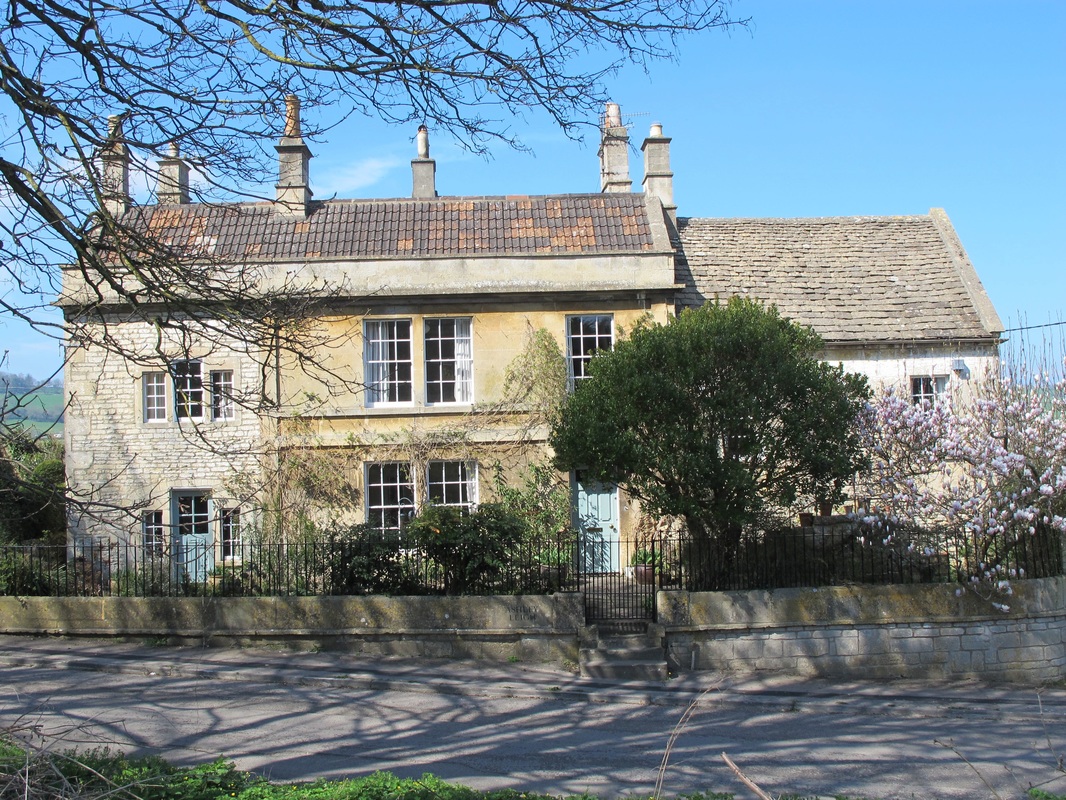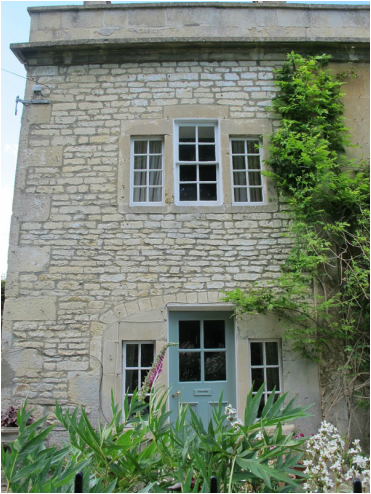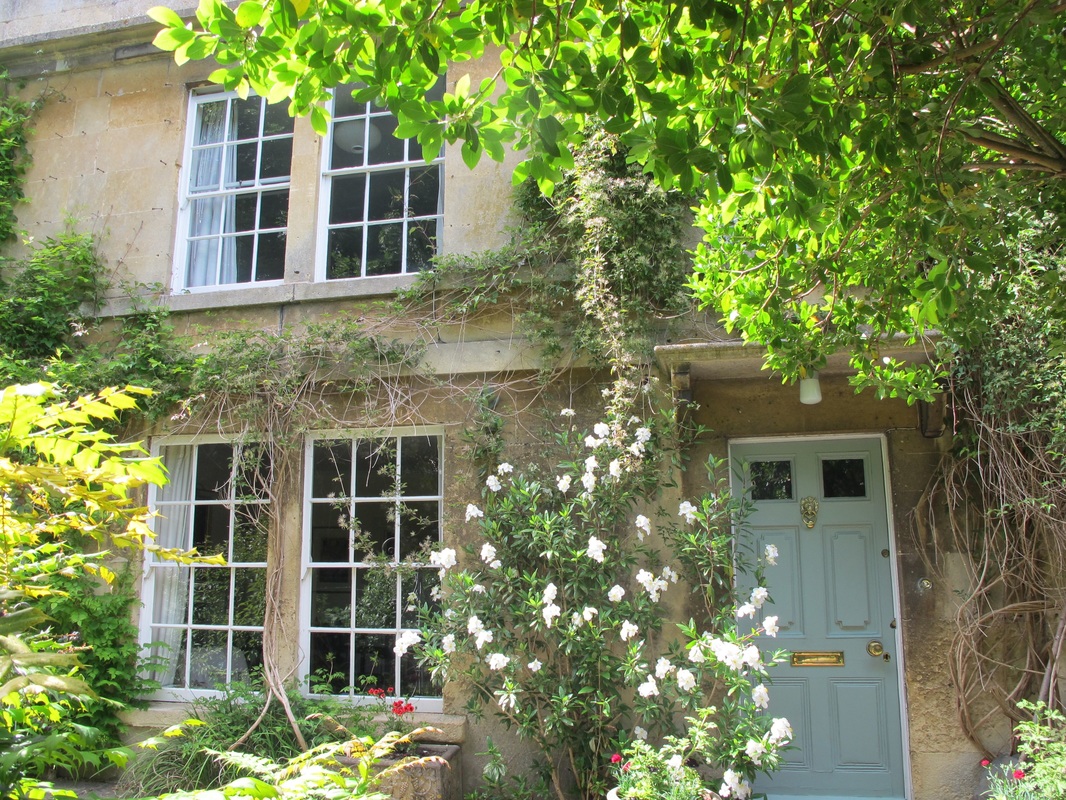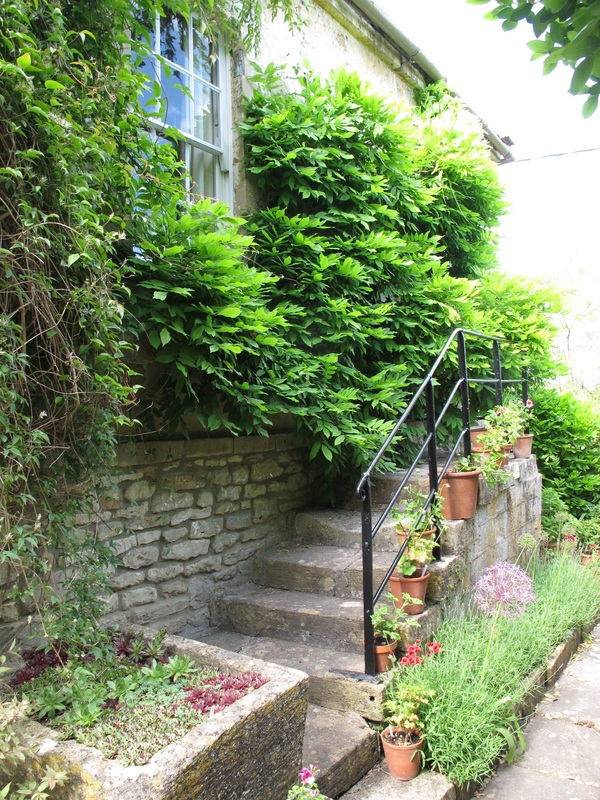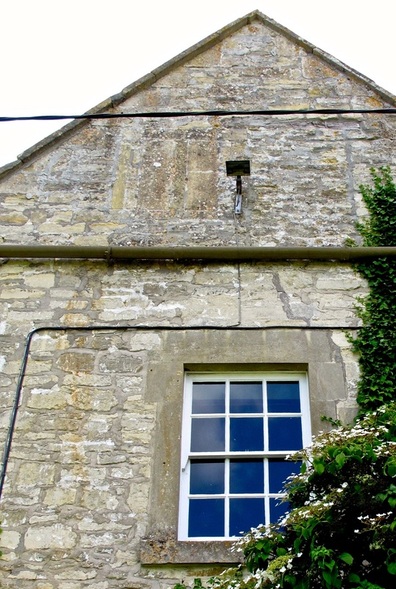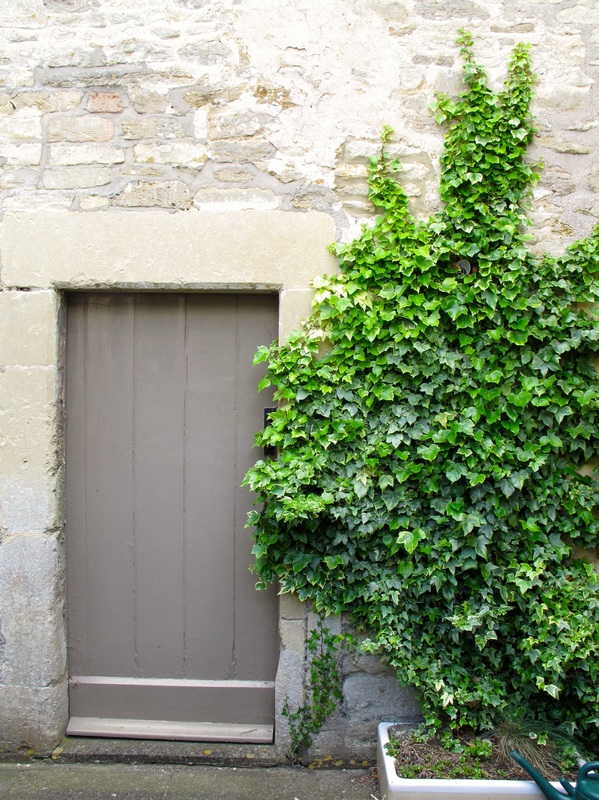|
The Story of Ashley Leigh
Robert Alderman July 2015 This is the story of a house in Ashley which has been researched by its owners Bob and Sheila Alderman. The house's story is fascinating and varied. The property started as a weaver's cottage. Then it became a nationally-famous goat breeding centre. And later it was the home of Sir Charles Hobhouse, Liberal Member of Parliament, who later inherited Monkton Farleigh Manor. All photos courtesy Carol Payne |
|
The southern part of the property is believed to have been a weaver's cottage dating from the late 1700s. This is the original house and the remainder is a later extension built in two different periods.
The middle section is Georgian and the northern part is Victorian. In the 1800s the house was occupied as four separate residences and these are still evident in the building. The original properties had separate staircases so that there are three separate accesses in the present house. The oldest part of the house has a carriage archway built into it. This may have been a workshop entrance and the weaver lived over the shop. The archway was later converted into the entrance doorway. The garage at the south of this cottage may have been the stables of the house at one time. There are local anecdotes that Brunel stayed in Ashley when visiting Box to supervise the tunnel engineering work. Probably he would have stayed in a more comfortable residence than Ashley Leigh but it is possible that he used the garage to store equipment. It later fell into disrepair and was let out for storage to the Coal & Coke Company at one point. |
The Georgian extension in the middle of the property is still the most attractive part of the property and presumably reflects the success of the weaver's business.It stands on a raised pavement to avoid spring water which might cascade down the road.
The Victorian part of the house has been greatly amended. The front staircase entrance has now been blocked in. On the north side, there is a window which has also been blocked in since it was recorded by Miss Tye in 1906. This was originally to allow light access to weavers working in the attic, an area which once had a separate staircase access. At one time there was another property in the garden which presumably collapsed and became a Victorian rubbish heap.
Residents of Ashley Leigh
In the later 1800s the cottages were railway houses for GWR workers. Before 1902 Mr and Mrs William Pole lived there. He was a gardener for Col Northey at Ashley Manor.[1] In about 1909 the house contained several families. Edwin Gale, a clerk at Box Railway Station, and his wife (nee Spencer) lived in part of the house and Frank Greenman, a worker for Sir Charles Morley at Shockerwick, lived in another part with his two sons and two daughters. In a third part lived Mr & Mrs Parsons and their granddaughter. By 1912 Col Parkinson was listed as a registered elector.
In the later 1800s the cottages were railway houses for GWR workers. Before 1902 Mr and Mrs William Pole lived there. He was a gardener for Col Northey at Ashley Manor.[1] In about 1909 the house contained several families. Edwin Gale, a clerk at Box Railway Station, and his wife (nee Spencer) lived in part of the house and Frank Greenman, a worker for Sir Charles Morley at Shockerwick, lived in another part with his two sons and two daughters. In a third part lived Mr & Mrs Parsons and their granddaughter. By 1912 Col Parkinson was listed as a registered elector.
Miss Emily Skidmore
During the inter-war years several properties in the area were owned by the Skidmore sisters: (Miss Catherine, the eldest, at Ashley Cottage); and Miss Emily and Mrs Elizabeth Jane Reed Smith (at Ashley Leigh). The Skidmore family came from Rickmansworth, Hertfordshire. It was Miss Emily Skidmore who made the four cottages into a single property. She lived there for a quarter of a century after 1922.[2]
Miss Emily's claim to fame was breeding a prize-winning herd of 24 goats which she showed all over England. She achieved national fame and by 1927 other breeders referred to her when selling their animals: from the Milking Pedigree, Ashley Leigh, Box.[3]
During the inter-war years several properties in the area were owned by the Skidmore sisters: (Miss Catherine, the eldest, at Ashley Cottage); and Miss Emily and Mrs Elizabeth Jane Reed Smith (at Ashley Leigh). The Skidmore family came from Rickmansworth, Hertfordshire. It was Miss Emily Skidmore who made the four cottages into a single property. She lived there for a quarter of a century after 1922.[2]
Miss Emily's claim to fame was breeding a prize-winning herd of 24 goats which she showed all over England. She achieved national fame and by 1927 other breeders referred to her when selling their animals: from the Milking Pedigree, Ashley Leigh, Box.[3]
Mrs Elizabeth Reed-Smith died in 1935 leaving an estate worth £59,846 including personal bequests of a year's salary and £300 to her chauffeur William Peadon, £20 to her housemaid, Lily Carey, and her parlour-maid, Emily Kate Miles.[7] Miss Emily Skidmore died of pneumonia in 1947.
Sir Charles Hobhouse
For many years the house was owned by the important Liberal Member of Parliament for Bristol East, Sir Charles Edward Henry Hobhouse. In 1926 Sir Charles and his first wife Georgina Fleetwood Hobhouse (nee Fuller) of Neston lived there and in 1936 it was Sir Charles and his second wife, Gladys Aimee Hobhouse (widow of Mr Brendon).
Sir Charles was keen on animal protection and a prime mover in the Society for the Protection of Animals (later to become the RSPCA). Sir Charles was active locally and he brought his horses down to Bill Peters in the 1950s for attention. Sir Charles left the property when he inherited Monkton Farleigh Manor from his uncle.
Later Residents
Then in 1953 and for the next ten years Dr & Mrs Campbell lived there; then Mr and Mrs Moberley 1961 - 78. Mr Moberley is remembered as connected with the navy. Mrs Holford owned the property from 1978 to 1982; and now Bob and Sheila Alderman.
For many years the house was owned by the important Liberal Member of Parliament for Bristol East, Sir Charles Edward Henry Hobhouse. In 1926 Sir Charles and his first wife Georgina Fleetwood Hobhouse (nee Fuller) of Neston lived there and in 1936 it was Sir Charles and his second wife, Gladys Aimee Hobhouse (widow of Mr Brendon).
Sir Charles was keen on animal protection and a prime mover in the Society for the Protection of Animals (later to become the RSPCA). Sir Charles was active locally and he brought his horses down to Bill Peters in the 1950s for attention. Sir Charles left the property when he inherited Monkton Farleigh Manor from his uncle.
Later Residents
Then in 1953 and for the next ten years Dr & Mrs Campbell lived there; then Mr and Mrs Moberley 1961 - 78. Mr Moberley is remembered as connected with the navy. Mrs Holford owned the property from 1978 to 1982; and now Bob and Sheila Alderman.
References
[1] Local anecdote courtesy Nellie Tye
[2] Taunton Courier & Western Advertiser, 25 October 1922
[3] Bath Chronicle and Weekly Gazette, 10 September 1927
[4] Bath Chronicle and Weekly Gazette, 25 May 1929
[5] Bath Chronicle and Weekly Gazette, 1 June 1935
[6] Bath Chronicle and Weekly Gazette, 9 August 1924
]7] Bath Chronicle and Weekly Gazette, 30 November 1935
[1] Local anecdote courtesy Nellie Tye
[2] Taunton Courier & Western Advertiser, 25 October 1922
[3] Bath Chronicle and Weekly Gazette, 10 September 1927
[4] Bath Chronicle and Weekly Gazette, 25 May 1929
[5] Bath Chronicle and Weekly Gazette, 1 June 1935
[6] Bath Chronicle and Weekly Gazette, 9 August 1924
]7] Bath Chronicle and Weekly Gazette, 30 November 1935
